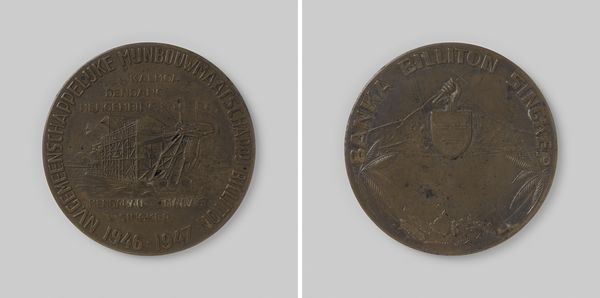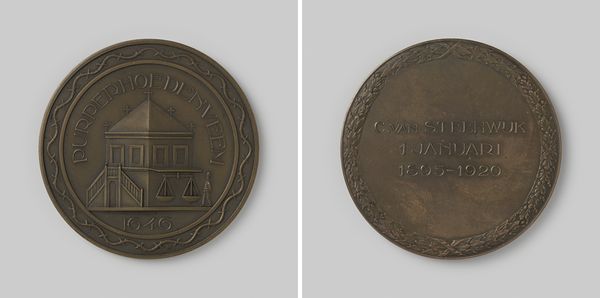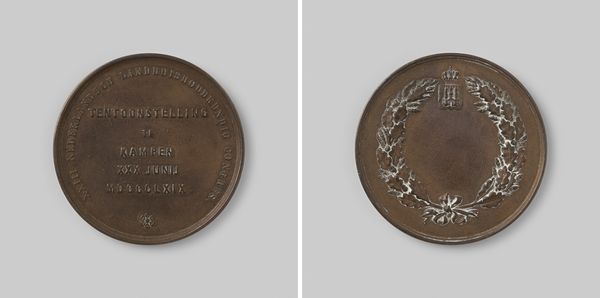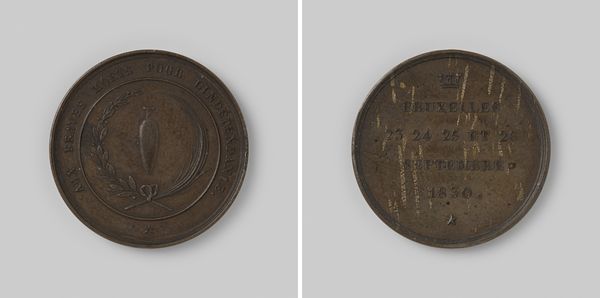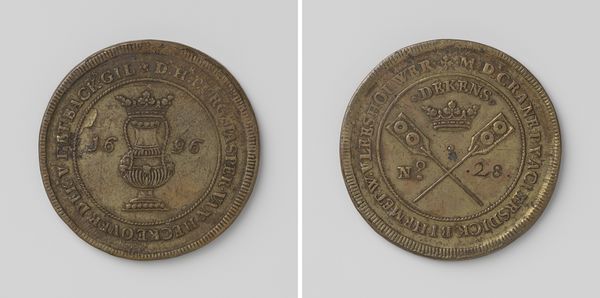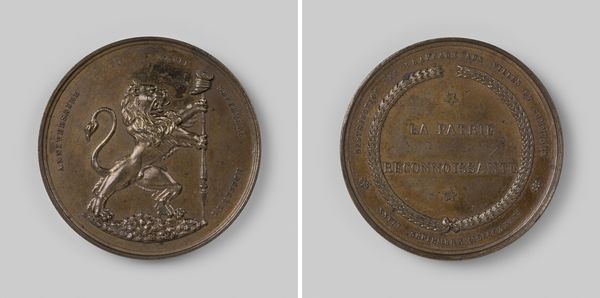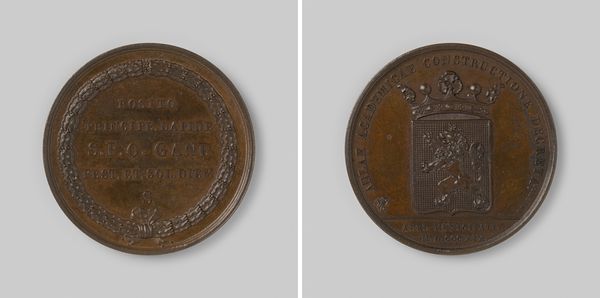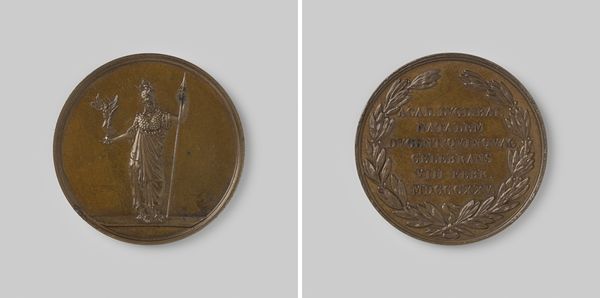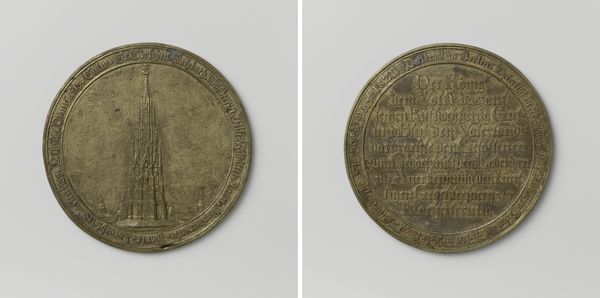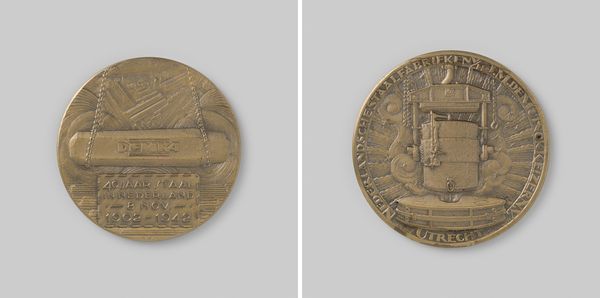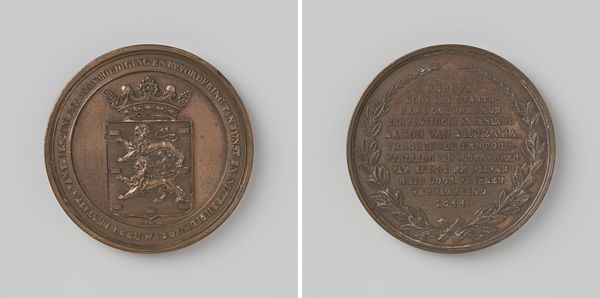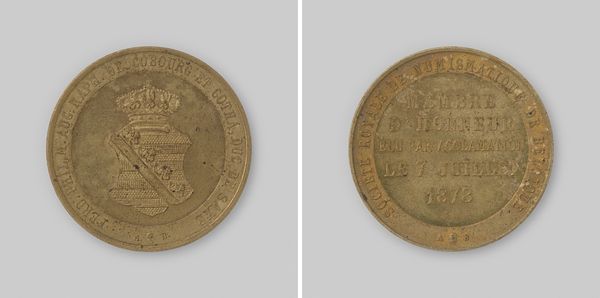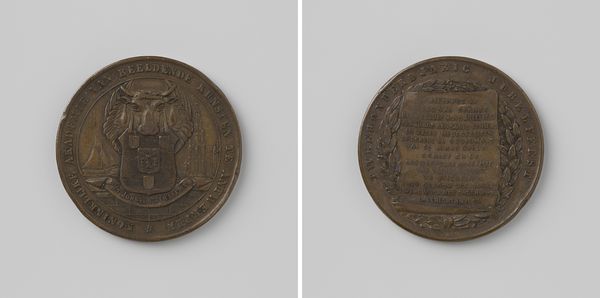
print, metal, sculpture
# print
#
metal
#
sculpture
#
history-painting
Dimensions: diameter 4 cm, weight gr
Copyright: Rijks Museum: Open Domain
Editor: This is a rather chilling metal print and sculpture from around 1940. It's titled "Lotsverbondenheid NSB en Duitsers in 1940." Seeing the swastika and the inscription linking the Dutch NSB party and the Germans is deeply unsettling. It makes you wonder about the context of its creation and use. What’s your read on a piece like this, Curator? Curator: It's a powerful, albeit disturbing, piece of propaganda. From a historical perspective, such objects highlight how deeply ingrained political ideologies become materialized and disseminated through everyday objects. How do you see this functioning within the broader context of WWII? Editor: It strikes me as an attempt to normalize and solidify the collaboration, a form of social engineering almost. A small everyday item promoting ideology and control. Did these types of items play a big role in shaping public opinion? Curator: Absolutely. Consider how the deliberate distribution of such imagery within public and private spaces sought to normalize, legitimize and desensitize individuals to these ideologies. The very act of owning or trading this "sculpture," however small, involved the owner on a personal level in this larger system of political oppression. What is more unsettling about this to you – the object or what it represents? Editor: It's the insidious nature of representing it as something appealing and everyday, like this object. So what did these sculptures symbolize at the time and do they still bear the same power in modern museum displays? Curator: They acted as powerful symbols of belonging for supporters and tools of coercion. In a museum context today, the object functions as a potent historical artifact of this power play, acting as a stark reminder to visitors that propaganda, as a tool, never went away and always tries to make itself palatable to a population. Editor: I suppose understanding its historical and cultural weight allows me to confront how such symbols persist and resurface in contemporary settings. Food for thought indeed. Curator: Agreed, these historical echoes should force us to engage critically.
Comments
No comments
Be the first to comment and join the conversation on the ultimate creative platform.

